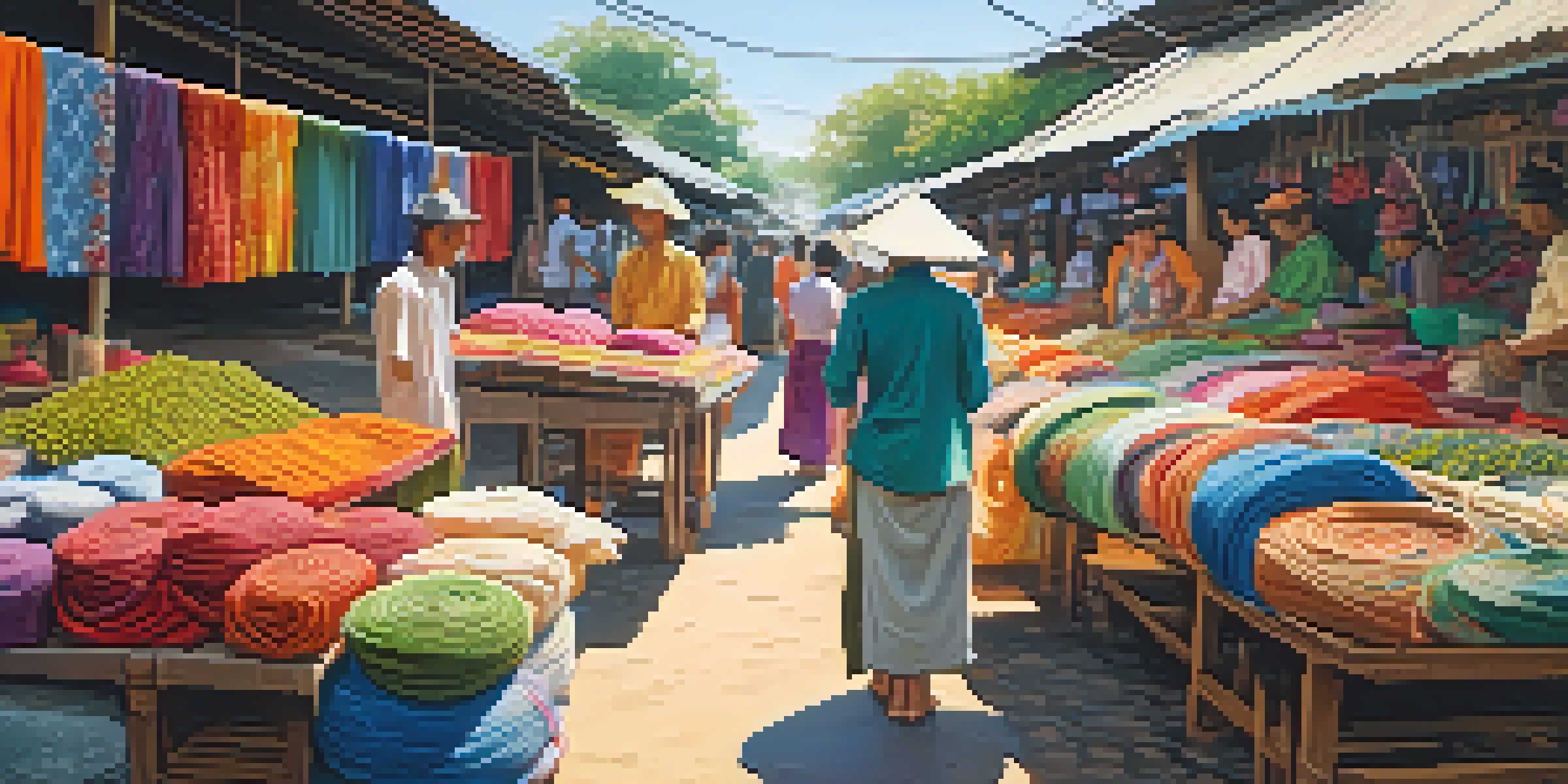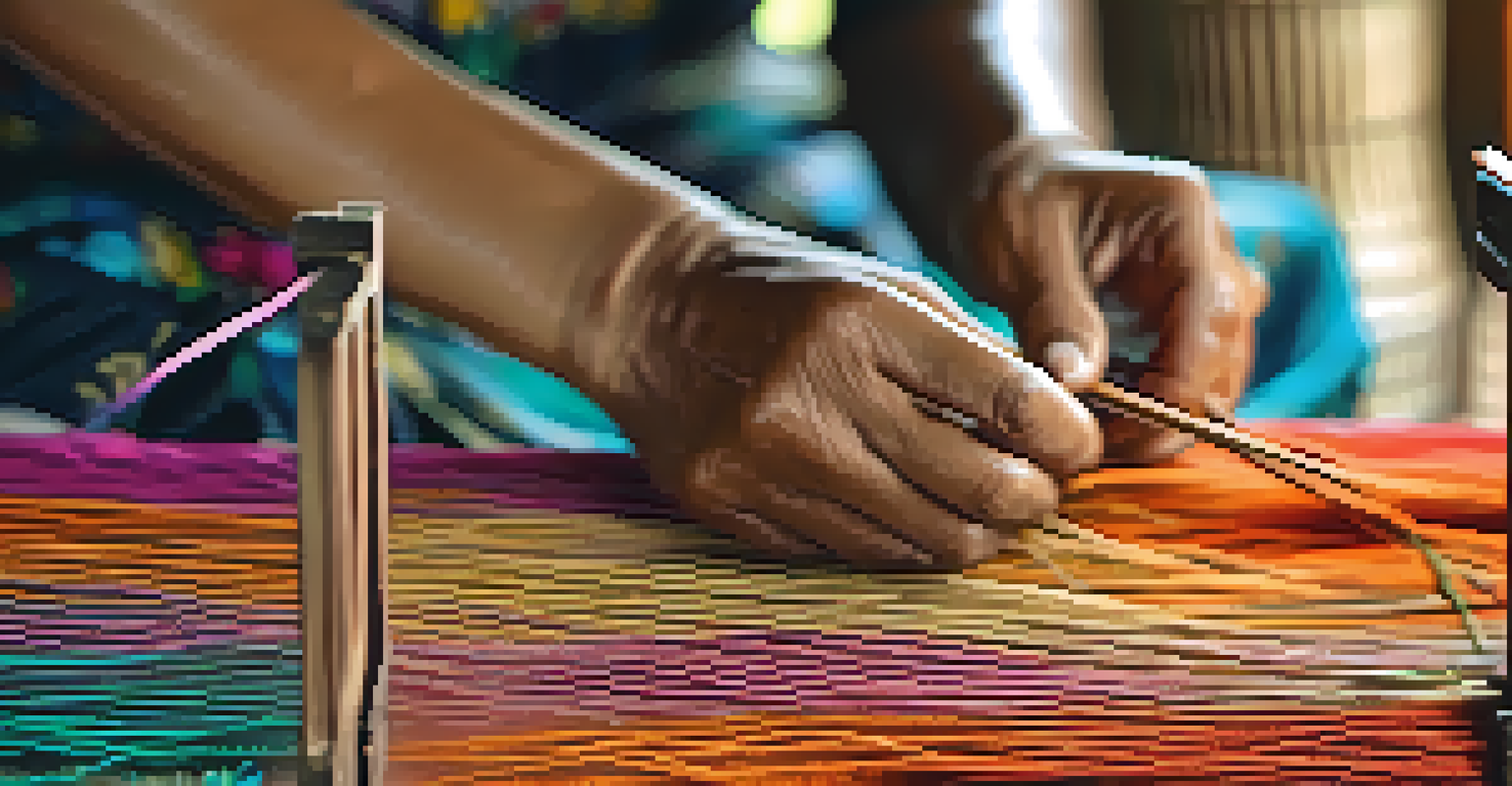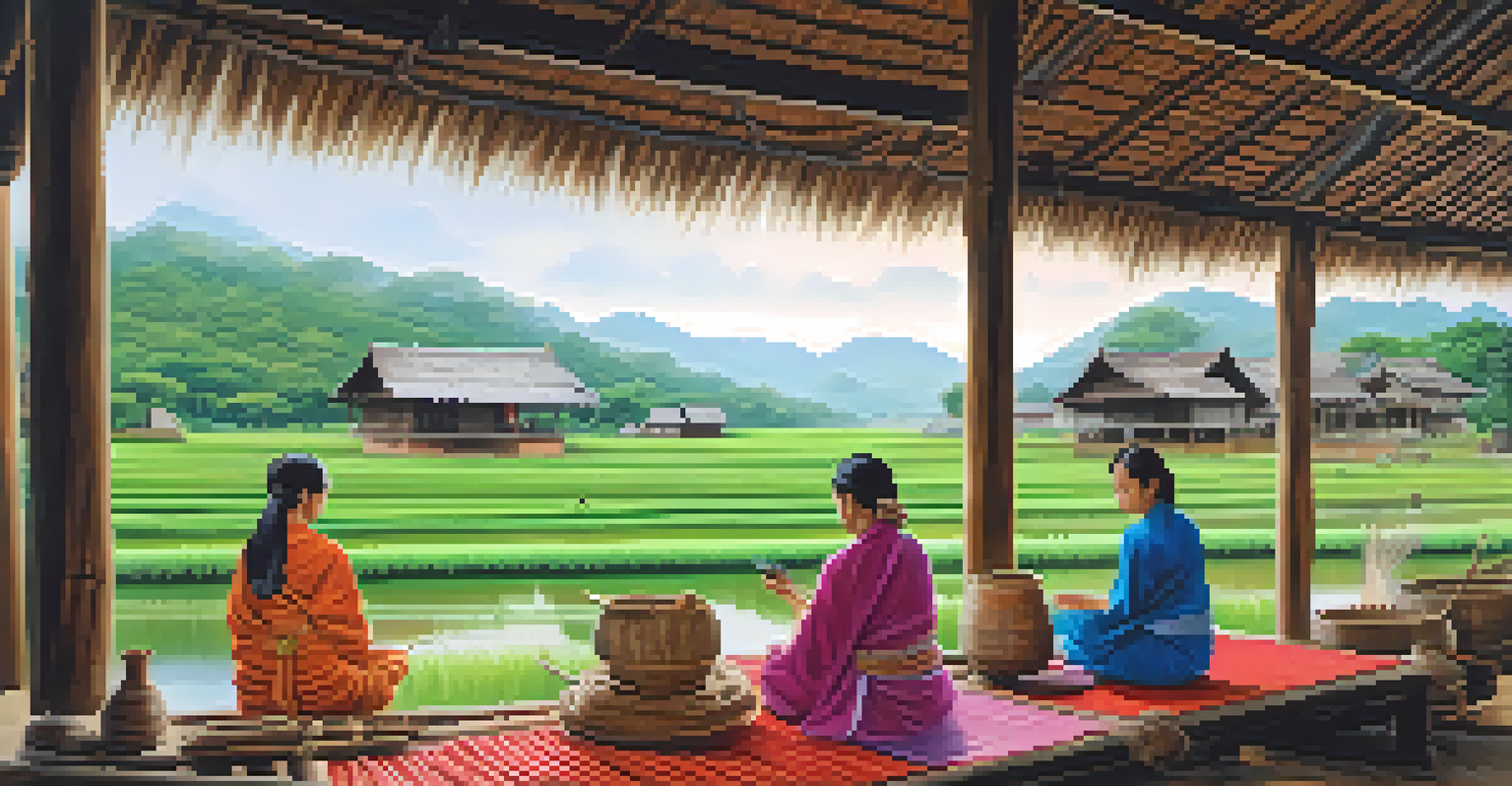How Thailand's Traditional Techniques Influence Sustainable Fashion

The Roots of Thailand's Textile Heritage
Thailand's textile industry is woven with rich traditions dating back centuries. Each region boasts unique fabrics and techniques, from the intricate silk of the northeast to the colorful cotton woven in the south. This rich heritage not only tells a story of cultural identity but also emphasizes the importance of craftsmanship, which is crucial in today's sustainable fashion landscape.
Fashion is about dreaming and making other people dream. It is for those who dare to be different and who want to tell their own story.
By prioritizing handmade processes over mass production, Thai artisans ensure that each piece is not just a product but a work of art. This dedication to craftsmanship minimizes waste and enhances the longevity of the garments, aligning perfectly with sustainable fashion principles. As consumers become more aware of the environmental impact of fast fashion, they are increasingly drawn to these authentic, handcrafted alternatives.
Moreover, the use of natural dyes derived from local plants not only gives Thai textiles their vibrant colors but also supports eco-friendly practices. This connection between traditional techniques and sustainability creates a compelling narrative that resonates with conscious consumers seeking ethical fashion choices.
Embracing Local Materials for Sustainability
Thailand's commitment to sustainability is evident in its emphasis on local materials. The use of organic cotton, silk, and other natural fibers reduces reliance on synthetic textiles, which are often harmful to the environment. By sourcing materials locally, Thai designers not only support their communities but also lessen the carbon footprint associated with transportation.

Choosing local materials also fosters a sense of pride and identity among artisans. It allows them to showcase their regional specialties, which can create a unique fashion narrative that attracts global attention. This practice not only benefits the environment but also promotes cultural heritage, making each piece a celebration of Thai craftsmanship.
Heritage Craftsmanship Drives Sustainability
Thailand's textile heritage emphasizes handmade craftsmanship, minimizing waste and aligning with sustainable fashion principles.
Furthermore, the revival of traditional weaving techniques encourages biodiversity in agriculture. By cultivating indigenous plants for dyeing and weaving, local farmers and artisans can preserve their ecosystems while creating stunning, sustainable garments that tell a story.
The Role of Community in Sustainable Fashion
In Thailand, community plays a vital role in the sustainable fashion movement. Local cooperatives often come together to share skills, resources, and knowledge, ensuring the survival of traditional techniques. This collaborative spirit not only strengthens the local economy but also fosters a sense of unity among artisans.
The best fashion is the one that reflects your personality, your culture, and your values.
By supporting community-based initiatives, consumers can make a positive impact on the lives of those involved in the fashion supply chain. Purchasing from these cooperatives helps provide fair wages and sustainable livelihoods for artisans, empowering them to maintain their craft while promoting eco-friendly practices.
Additionally, community workshops and training programs are essential in passing down traditional skills to future generations. This ensures that the rich heritage of Thai textiles continues to thrive, adapting to modern sustainable practices while remaining rooted in tradition.
Innovative Techniques Merging Tradition with Modernity
Thailand's sustainable fashion scene is not just about preserving the past; it's also about innovation. Designers are finding creative ways to merge traditional techniques with contemporary styles, making them appealing to a global audience. This fusion of old and new not only attracts consumers but also highlights the versatility of Thai craftsmanship.
For instance, modern silhouettes can be enhanced with traditional Thai weaving techniques, creating garments that are both stylish and sustainable. This approach allows designers to stay relevant in the fast-paced fashion industry while honoring their cultural heritage. It’s a beautiful dance between tradition and innovation, showcasing the best of both worlds.
Local Materials Enhance Eco-Friendliness
By using local materials like organic cotton and silk, Thai designers not only reduce environmental impact but also celebrate regional cultural identity.
Moreover, technology plays a role in this evolution, with designers utilizing digital platforms to reach broader markets. By showcasing their unique creations online, they can educate consumers about the importance of sustainable practices and the stories behind their garments, fostering a deeper connection to the products they purchase.
Consumer Awareness and Ethical Choices
With the rise of sustainability in fashion, consumer awareness is more important than ever. Thai artisans and brands are increasingly educating consumers about the environmental and social impacts of their choices. By highlighting the benefits of sustainable fashion, they encourage shoppers to consider the stories behind the clothes they buy.
Shoppers are becoming more discerning, seeking out brands that prioritize ethical practices. This shift in mindset is powerful, as it pushes brands to adopt more sustainable methods in their production processes. By choosing to support Thai brands that embody these values, consumers can contribute to a positive change in the fashion industry.
Engaging with local artisans through workshops, markets, or social media also fosters a deeper appreciation for sustainable fashion. When consumers understand the effort and care that goes into creating each piece, they are more likely to make informed, ethical choices that support both the environment and local communities.
The Impact of Sustainable Fashion on Thailand's Economy
Sustainable fashion is not just an ethical choice; it has significant economic implications for Thailand. By promoting traditional techniques and local materials, the industry supports small-scale artisans and cooperatives. This, in turn, strengthens local economies and contributes to job creation in rural areas.
As global demand for sustainable products increases, Thailand stands to benefit as a key player in this niche market. By leveraging its rich textile heritage and skilled artisans, the country can position itself as a leader in sustainable fashion. This growth not only enhances the economic landscape but also promotes cultural preservation.
Community Efforts Support Fair Fashion
Local cooperatives strengthen the sustainable fashion movement by sharing skills and resources, empowering artisans while promoting eco-friendly practices.
Moreover, the rise of eco-tourism tied to sustainable fashion initiatives can attract visitors interested in learning about traditional craftsmanship. This creates additional revenue streams for local communities, further reinforcing the connection between sustainable practices and economic prosperity.
The Future of Sustainable Fashion in Thailand
As the world shifts towards sustainability, Thailand is poised to become a beacon of hope in the fashion industry. The blend of traditional techniques with modern design creates a unique offering that appeals to conscious consumers. This alignment with global trends positions Thai fashion as a force for change in the industry.
Looking ahead, continued investment in education and resources for artisans will be crucial. By providing training in sustainable practices, designers can ensure that traditional techniques evolve to meet modern demands. This commitment to growth will not only preserve heritage but also foster innovation in the fashion sector.

Ultimately, the future of sustainable fashion in Thailand lies in collaboration. By uniting artisans, designers, and consumers, the country can create a vibrant ecosystem that champions sustainability while celebrating its rich cultural heritage. Together, they can pave the way for a more ethical and environmentally friendly fashion landscape.